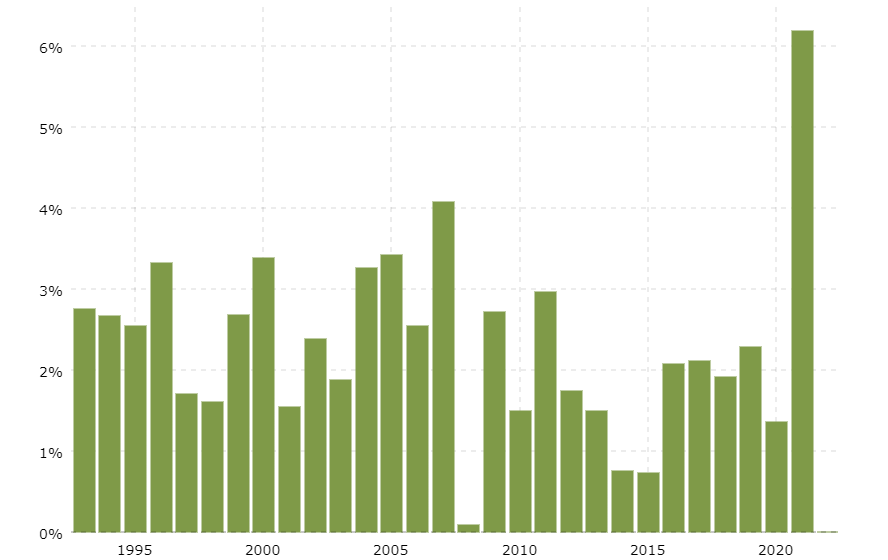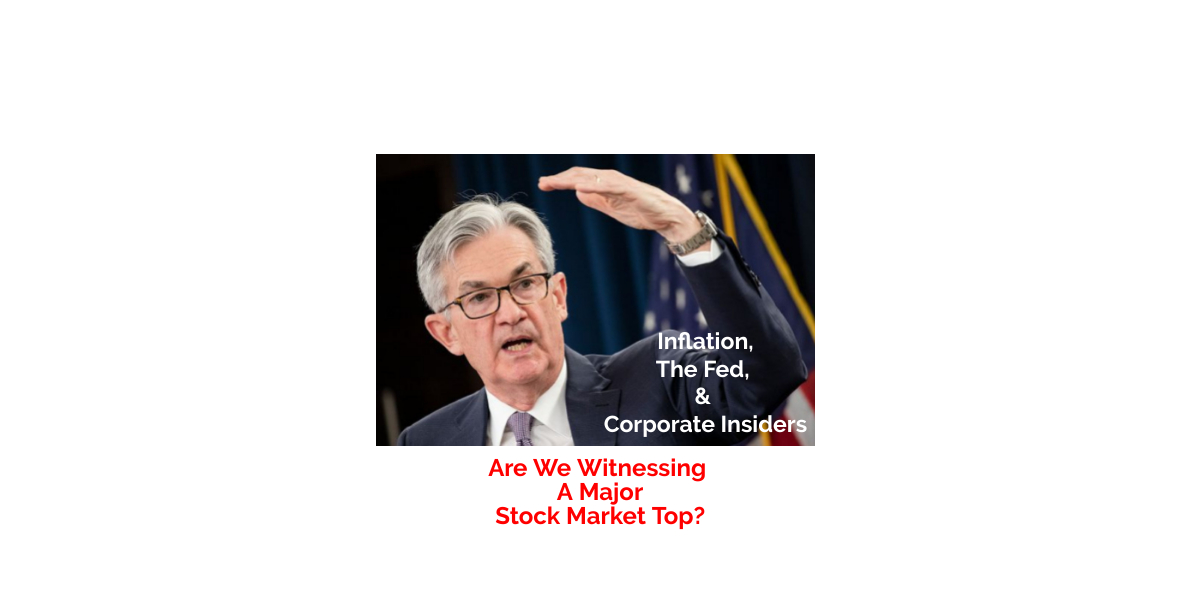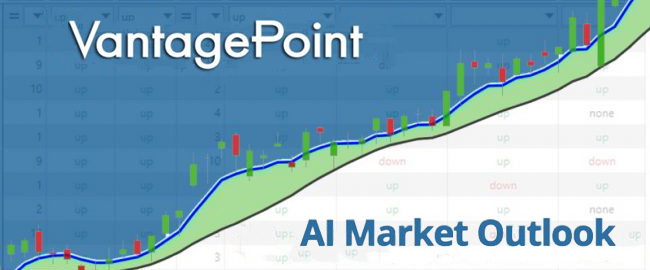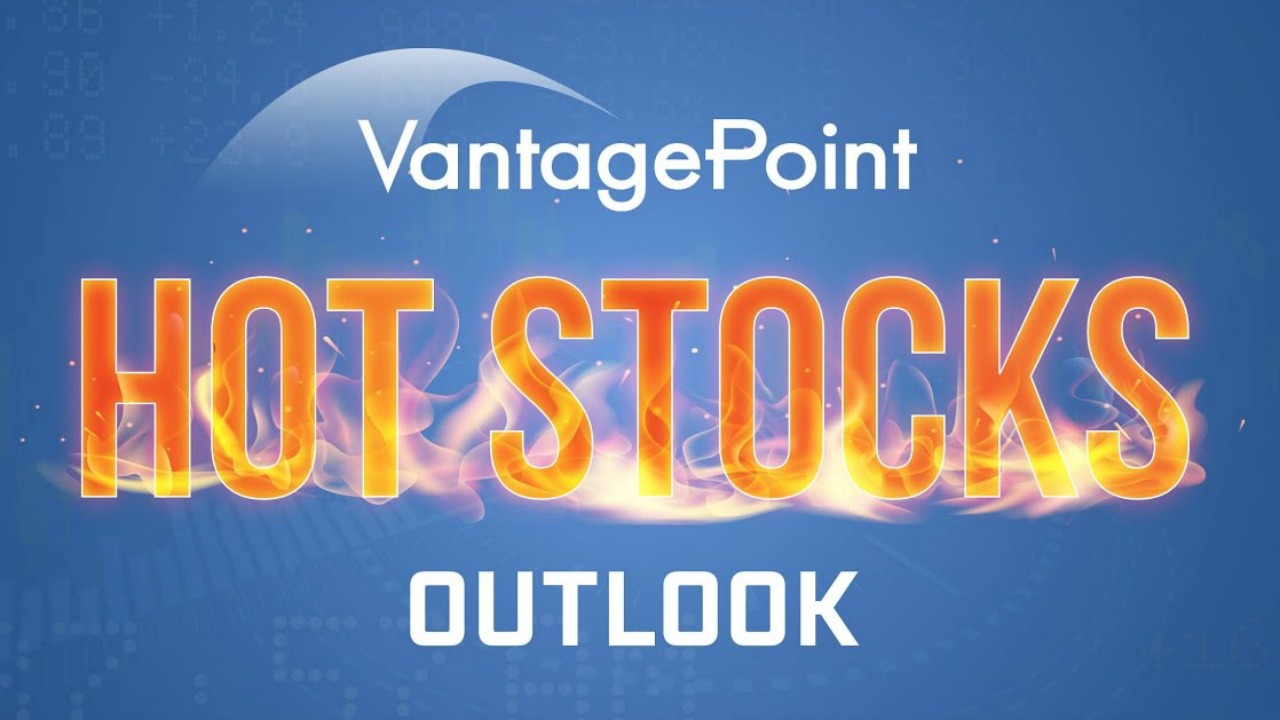This is a very big week in the financial markets.
The newest CPI numbers will be released Friday, December 10, 2021. Many analysts are very nervous about the expected jump in inflation. The last print of the CPI was 6.2%. This is the highest number in 30 years.
Expectations on Wall Street are that we will see a number between 6.8% and 7%. Ouch!
If we see a 7% handle it would mark the highest Consumer Price Index value in more than 40 years.
A higher number would definitively put to rest the narrative that inflation would be transitory which was bandied about earlier in the year.

Will the number spike significantly?
The ramifications of this report are significant for the financial markets. The Federal Reserve has been announcing that it will start tapering their bond purchases by $15 billion a month. This is very significant for many reasons. Primarily, they have been unable to taper purchases of bonds over the last 13 years and have significantly grown their balance sheet with debt to over $8 trillion. The consequence here is that if they taper, who else is going to buy that 15 billion dollars’ worth of bonds every month? Since bonds are a negative yield trap, the outcome is that we would have to see a drastic cut in government spending or a massive tax increase. Either one of these actions would slow whatever economic progress has occurred since the lockdowns began.
The largest dilemma in the financial markets today is that savers can’t save. Anyone who trusts the full faith and credit of the U.S. government, is rewarded with negative returns after inflation is factored in. Let’s say, that the CPI number comes in 6.8%. The Ten-Year Treasury Notes are currently yielding 1.47%. When you subtract the 6.8% projected inflation rate from the 1.47% yield you end up with a negative yield of 5.33%.
This is the result of ten years of the Federal Reserve manipulating interest rates to grow the economy after the Great Financial Crisis of 2008. This metric is fundamental to defining stability and well-being in an economy. When you stop and think about it for just a short while you begin to understand the level of toxicity that exists in debt assets.
The Debt markets of the world are estimated to be capitalized at over 100 trillion dollars in valuation. Over 50 trillion of that capitalization of is yielding less than 2%! In the United States better than 90% of the junk bond market is yielding less than the inflation rate defined by the CPI. When you contemplate this reality, you can begin to comprehend how upside down the valuations in other financial markets are. The world is playing the “yield chase” game and stocks have been the favorite asset class to generate positive returns since the debt markets have been neutered. Why would anyone invest in an asset class that is guaranteed to lose money? It is the question that dictates financial sanity in an age where the money printing press is being used to solve all problems.
Here are the important financial releases to consider:
- CPI numbers release Fri, December 10th at 8:30am EST. Expectations are that the CPI will print at 6.8% or higher.
- The Fed announces its policy decision on tapering at the next Federal Reserve Open Market Committee on Wed, Dec 15th
- Congress must finalize a major spending bill most likely in January 2022 after the Christmas recess.
What could possibly go wrong?
For the last thirteen years the Federal Reserve has tried to cut back or eliminate their bond purchases. Every time they have started tapering, the stock market and bond markets have sold off precipitously and forced the Fed to backtrack and eliminate this action.
Simple question: Let’s say, Congress finalizes a major spending bill in January 2022, who ends up financing the new spending? Are you going to invest into negative yielding bonds? The only game in town is the Federal Reserve. Yet the Fed has been trying to stop buying bonds for years and has said that they were going to cut back purchases starting last month and finalizing their taper by mid-2022.
The choices are few and far between:
- The government will be forced to massively raise taxes.
- The markets or the Fed will force interest rates higher, which exponentially increases the interest expense on the debt.
- The government is forced to cut spending.
- Continue business as usual by kicking the can down the road and gradually debase the currency.
These factors will have a significant impact on markets and the economy moving forward and the drama appears to be building to a dramatic crescendo with the release of the latest Consumer Price Index numbers.
One of the other parallel stories which makes this week’s CPI release all the more dramatic is that we are seeing a very frothy stock market environment. New investors and capital inflows are at all-time highs. Yet on the flipside we are simultaneously seeing record selling by corporate insiders.
The biggest names in the corporate world have sold a record $69 billion in stock in 2021 as share valuations surged to record highs, new data from Securities and Exchange Commission (SEC) filings show. This figure traditionally increases in December as this is typically an active month ahead of tax season. This $69 billion in insider selling is up 30% from 2020.
Traditionally any time you see record insider selling, accompanied by new investors entering the market in droves is the sign that a major market top is at hand.
Tesla Motors CEO Elon Musk was at the top of the list with $10 billion in stock sales. Jeff Bezos of Amazon fame sold $9.97 billion. The Walton family cashed in on $6.18 billion in Walmart stock in 2021. Facebook Chief Executive Mark Zuckerberg liquidated $4.47 billion worth of stock. Lastly the founders of Google, Sergey Brin and Larry Paige sold $1.5 billion of Google stock.
There’s an old saying on Wall Street about following the smart money.
It goes something like this…
The intelligent investor sells to the optimists and buys from the pessimists but always follows the insiders.
While some market analysts consider insider selling to be a cause for concern, it might depend on how executives and board members liquidate their assets as well as how much they retain.
In this case, the sales were part of prescheduled selling plans, also known as 10b5-1.
In 1934, the Securities and Exchange Commission established Rule 10b5. This rule makes it possible for insiders to pre-schedule their purchases or sales of securities well in advance to prevent potential conflicts of interest.
Insider buying is normally a very bullish sign because it tells the world that the management team is betting heavy on their ability to execute and deliver on their plan. With regards to insider selling, it is sometimes done for tax purposes or to raise cash for other investment possibilities. What makes these record insider sales noteworthy is that basic finance preaches that if you are expecting inflation, a dollar today is worth much more than a dollar tomorrow. A high CPI number would confirm that even corporate insiders fear how inflation will change the valuation of their stocks.
Traditionally, Insiders don’t try to pick bottoms or tops. They are long term investors. However, when they sell big, it is probably not an alarm to get bearish, but it clearly communicates that there may not be as much upside potential left in the stock.
Is it possible that they too are looking for at least a double-digit correction to buy back in?
While the Insider selling is a cause for concern, sometimes insiders collecting a small paycheck, may want to sell shares and pocket some of their earnings.
But it is also easy to make the case that inflation, money supply growth is forcing executives to see the writing on the wall.
Here are a couple great resources to track insider buying and selling:
Securities Exchange Commission Database
One thing is clear about the huge increase in Insider selling. America’s top executives are taking the timeless advice of the great John Templeton who said: “When you find that the crowd is overenthusiastically trying to buy, help them and sell. It usually works out.”
Let the buyer beware.
Is a Correction Coming?
Now that the Federal Reserve is promising to taper its $120-billion-per-month quantitative easing program and potentially raising interest rates in summer 2022, a growing number of investors are anticipating a correction in the stock market.
How do you make sense of it all?
Years ago, a top hedge fund trader shared with me a secret that has helped me avoid unnecessary stress. He told me that before making any investment or trading decision to always look at the entire picture.
Below is a chart of the performance of the major asset classes over the last ten years showing performance on a short to long term time frame.

The numbers don’t lie. It should override any narrative you hear on the news.
When you evaluate this performance look at these metrics as either revenue generators or expenses.
If these returns were generated by employees, who would you hire more of, and who would you fire? Clearly Bitcoin is the fastest horse in the race and Silver and Gold have been the worst all around performers.
Next, if we see business as usual going forward the trends which created this performance will most likely continue moving forward. Meaning these trends will continue, with a hiccup here and there.
If something major changes, the expectation is that the poorest performers (Gold & Silver) will benefit, and the strongest performers (Bitcoin & SP500) will suffer.
And while you are at it, look at the returns on the TNOTES or other debt instruments and recognize that at some point investors in that market will stampede into other asset classes when they are forced to admit that they can’t make any money when real returns are negative.
This week’s inflation number will make the case that interest rate normalization is impossible today. Rates would have to increase over 5% just for debt investors to break even on inflation.
Unless something changes, that day is coming and it will unleash the next major trends in stocks, crypto and commodities as money moves out of debt instruments into another asset class where yield can be earned.
For the past 18 months we have been anticipating the three markets that would offer tremendous trading opportunities were Stocks, Metals, and Bitcoin. We made that conclusion recognizing that as the printing press was thrown into overdrive the YIELD CHASE in the financial markets would occur.
But to be effective in markets you need to drill down to always strive to be on the right side, of the right market at the right time.
Great traders are obsessed with not losing money. Having a repeatable discipline to uncover great trade ideas is vital to today’s giant market distortions.
This is why neural networks, machine learning, and artificial intelligence are a necessity for today’s trader. When what “SHOULD” happen aligns with what “IS” happening some explosive outcomes can occur and that is where you want to be as a trader. That is the promise of artificial intelligence can make to you today.
The challenge of trading is the organization of information so that effective decision making can occur? How good have your decisions been over the past year? How do you think your trading decisions compare to A.I.?
Mistakes are problematic for humans, but for machine learning it’s the pathway to mastery and excellence. The real education in trading always lies in learning from the losers and completely understanding why something doesn’t work. More importantly, as a trader you want to focus your hard-earned savings on what is proven to work.
Most humans have a really hard time learning from bad experiences. The ego gets in the way, each and every time.
Since artificial intelligence has beaten humans in Poker, Chess, Jeopardy and Go! do you really think trading is any different?
Knowledge. Useful knowledge. And its application is what A.I. delivers.
Artificial intelligence is not “a would be nice to have” tool.
It is an “absolutely must have” tool to flourish in today’s global markets.
Intrigued? I invite you to learn more about how artificial intelligence, machine learning, neural networks and intermarket analysis can help you find your next great trade.
Please visit with us at our – Next Free Live Training.
It’s not magic. It’s machine learning.
Make it count.
THERE IS A SUBSTANTIAL RISK OF LOSS ASSOCIATED WITH TRADING. ONLY RISK CAPITAL SHOULD BE USED TO TRADE. TRADING STOCKS, FUTURES, OPTIONS, FOREX, AND ETFs IS NOT SUITABLE FOR EVERYONE.IMPORTANT NOTICE!
DISCLAIMER: STOCKS, FUTURES, OPTIONS, ETFs AND CURRENCY TRADING ALL HAVE LARGE POTENTIAL REWARDS, BUT THEY ALSO HAVE LARGE POTENTIAL RISK. YOU MUST BE AWARE OF THE RISKS AND BE WILLING TO ACCEPT THEM IN ORDER TO INVEST IN THESE MARKETS. DON’T TRADE WITH MONEY YOU CAN’T AFFORD TO LOSE. THIS ARTICLE AND WEBSITE IS NEITHER A SOLICITATION NOR AN OFFER TO BUY/SELL FUTURES, OPTIONS, STOCKS, OR CURRENCIES. NO REPRESENTATION IS BEING MADE THAT ANY ACCOUNT WILL OR IS LIKELY TO ACHIEVE PROFITS OR LOSSES SIMILAR TO THOSE DISCUSSED ON THIS ARTICLE OR WEBSITE. THE PAST PERFORMANCE OF ANY TRADING SYSTEM OR METHODOLOGY IS NOT NECESSARILY INDICATIVE OF FUTURE RESULTS. CFTC RULE 4.41 – HYPOTHETICAL OR SIMULATED PERFORMANCE RESULTS HAVE CERTAIN LIMITATIONS. UNLIKE AN ACTUAL PERFORMANCE RECORD, SIMULATED RESULTS DO NOT REPRESENT ACTUAL TRADING. ALSO, SINCE THE TRADES HAVE NOT BEEN EXECUTED, THE RESULTS MAY HAVE UNDER-OR-OVER COMPENSATED FOR THE IMPACT, IF ANY, OF CERTAIN MARKET FACTORS, SUCH AS LACK OF LIQUIDITY. SIMULATED TRADING PROGRAMS IN GENERAL ARE ALSO SUBJECT TO THE FACT THAT THEY ARE DESIGNED WITH THE BENEFIT OF HINDSIGHT. NO REPRESENTATION IS BEING MADE THAT ANY ACCOUNT WILL OR IS LIKELY TO ACHIEVE PROFIT OR LOSSES SIMILAR TO THOSE SHOWN.











